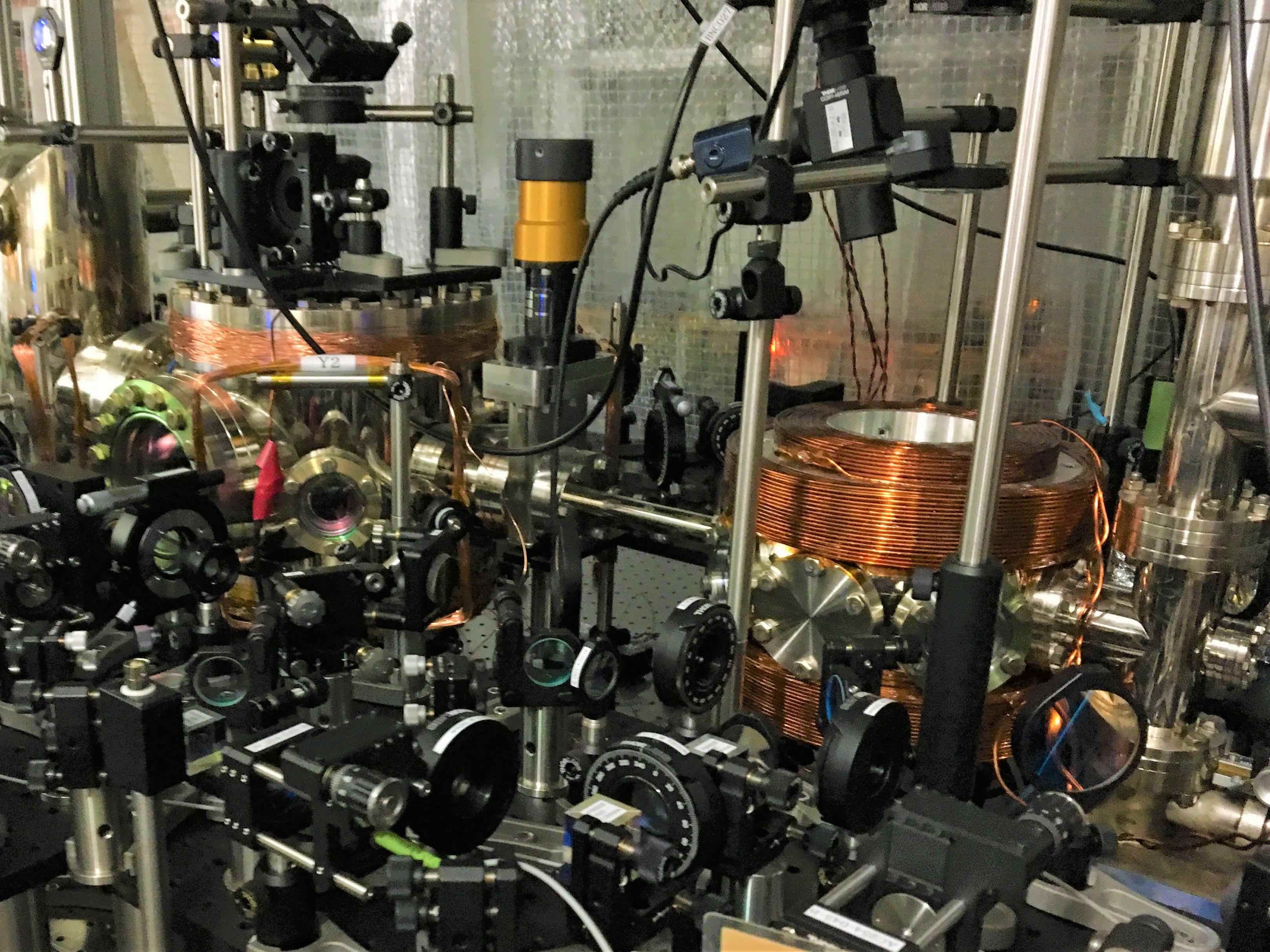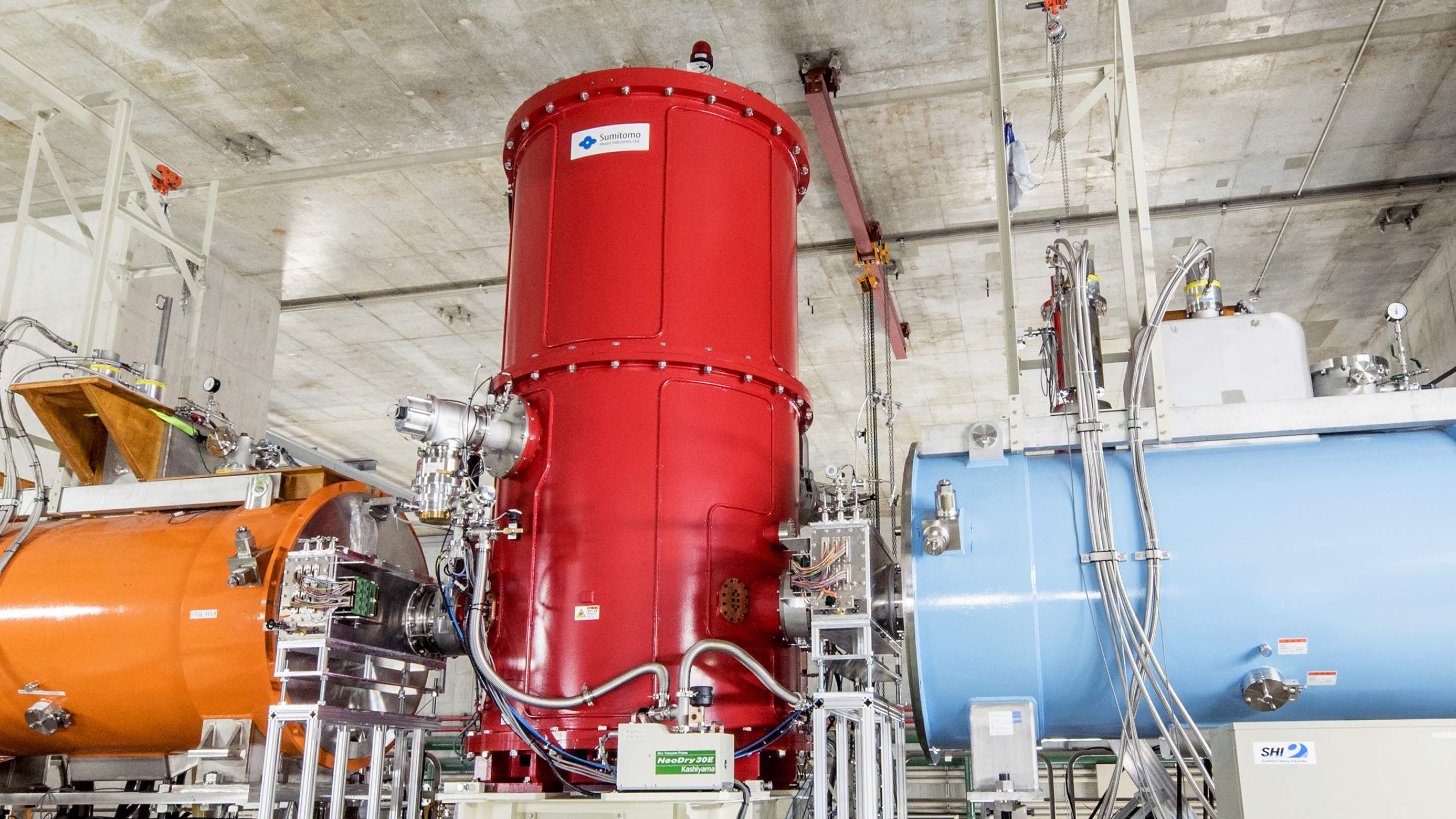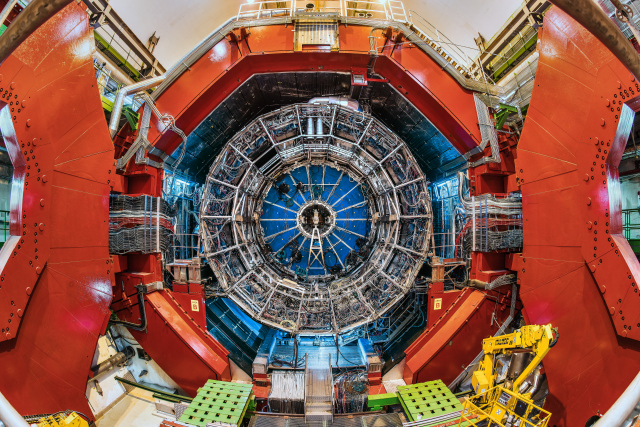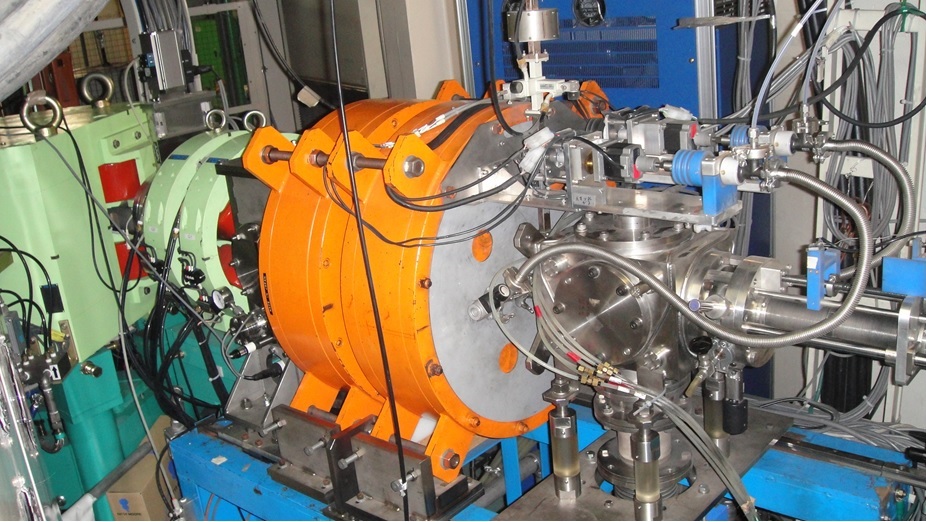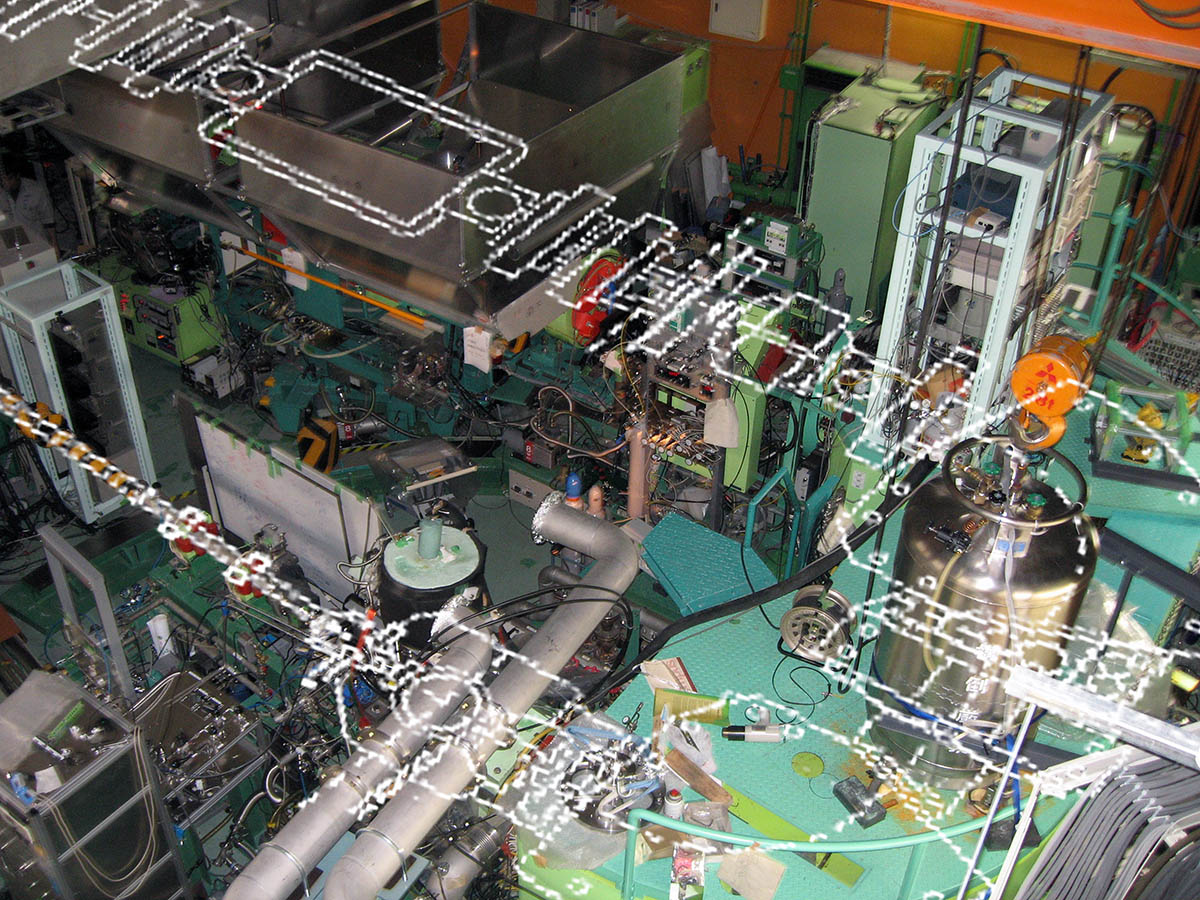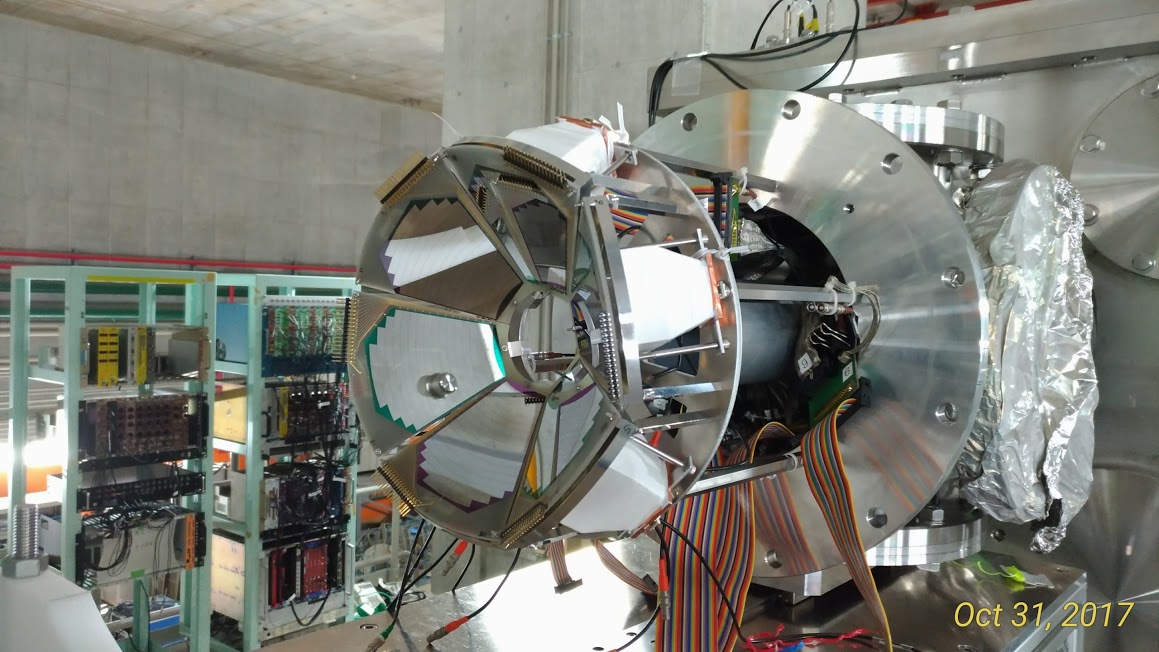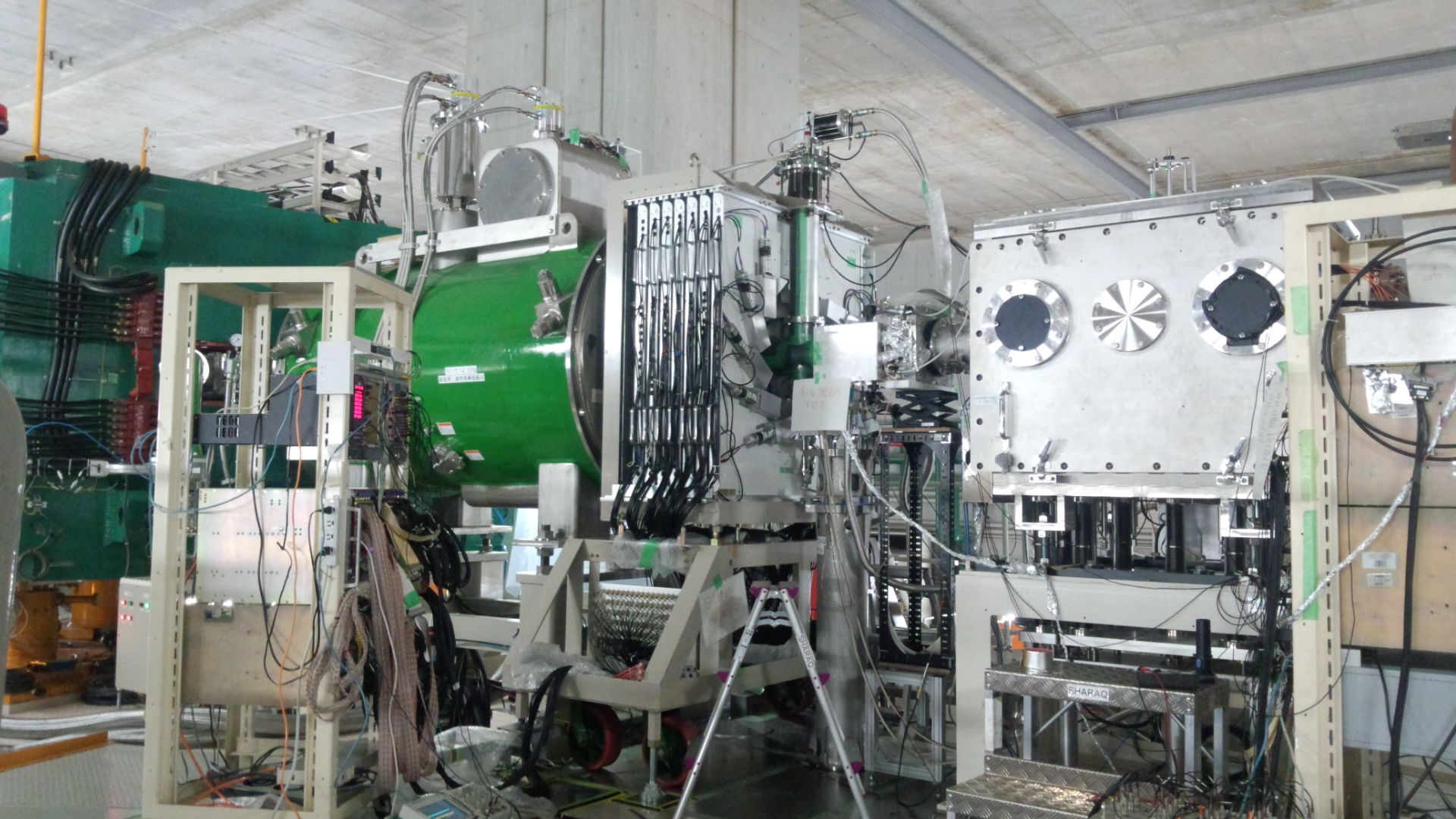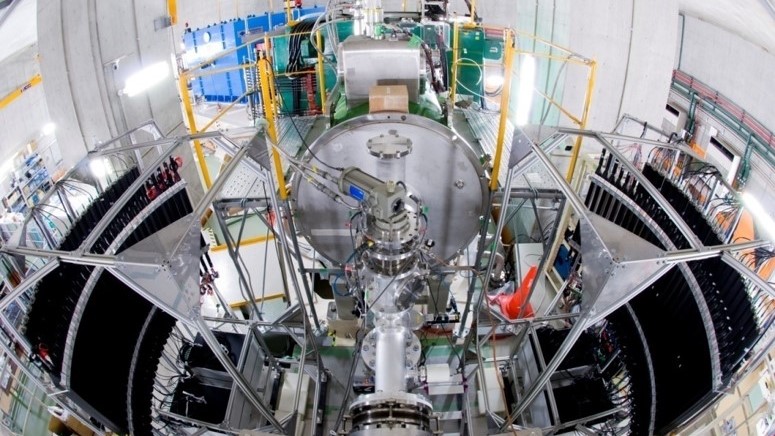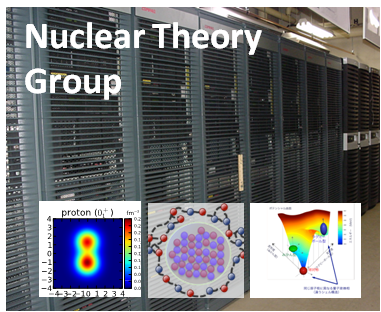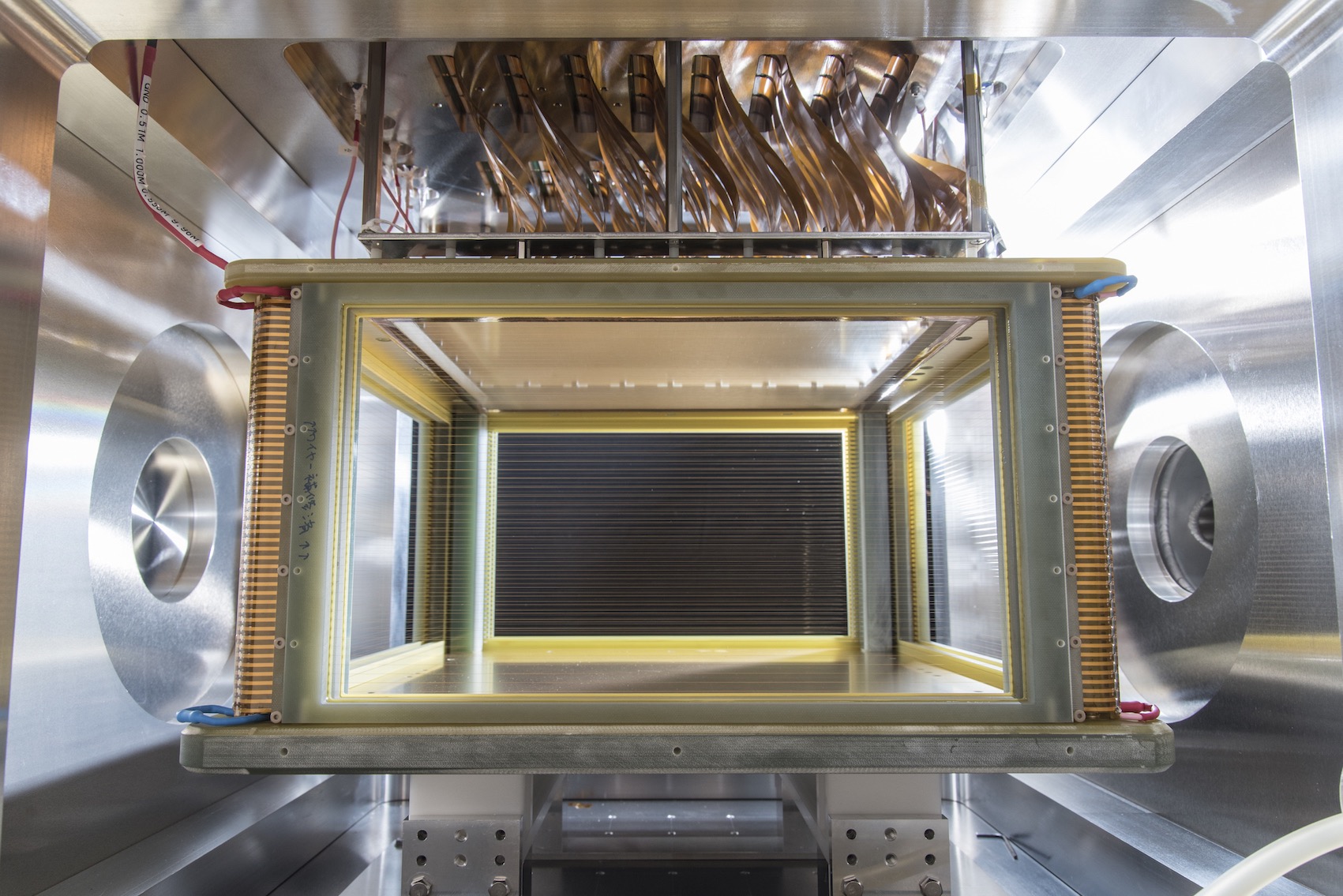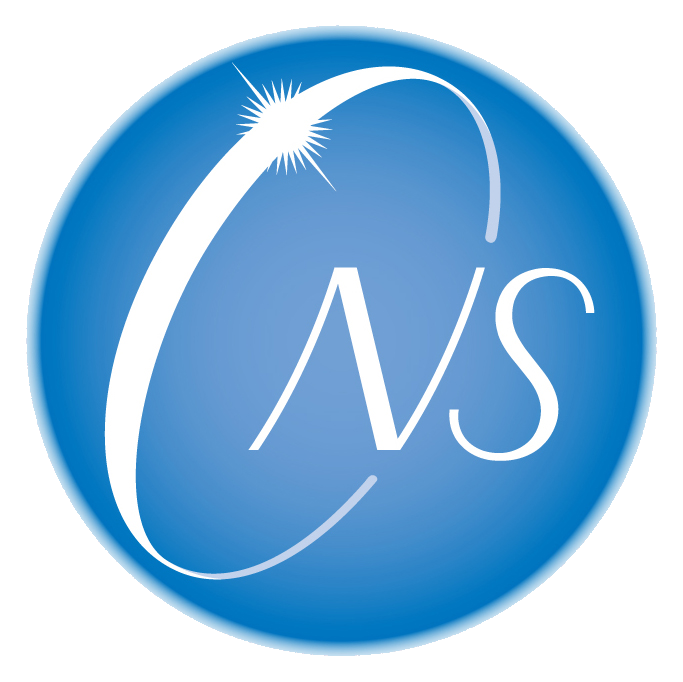2025
進学ガイダンス2025
大学院進学希望者を対象にガイダンスを行います。
各研究室の情報は以下のページに掲載されていますので、随時、教員までご相談ください。
山口研(宇宙核物理)
矢向研(エキゾチック核反応)
今井研(低エネルギー重イオン核反応)
青井研(核構造)
郡司研(高エネルギー重イオン衝突)
酒見研(基本対称性)
理研RIビームファクトリー原子核科学研究センター見学ツアー
最先端の原子核物理研究の拠点である理化学研究所RIビームファクトリーや原子核科学研究センターの見学・説明会を行います。
2025年 5月10日(土) 13時頃~
理化学研究所 (埼玉県和光市広沢2-1)
参加登録フォーム
物理学専攻 入試ガイダンス(オンライン)
2025年 5月31日(土) 10:00-15:30
原子核科学研究センターの属するA2サブコースの紹介が含まれます。
詳細は、近日中に物理学専攻のページに掲載されます。うち、13:30-15:30 には、原子核科学研究センター進学相談会をハイブリッドにて開催します。
原子核科学研究センター進学相談会 zoom接続先
ミーティング ID: 890 8854 5316 パスコード: 778512
物理学専攻A2サブコース合同ガイダンス
2025年 6月4日(水) 16:00 より本郷キャンパスにて開催します。詳細
研究所ガイダンス
2025年 6月13日(金) 16:30-18:00 理学部1号館233
原子核科学研究センターの各研究室の紹介を含むガイダンスを行います。
CNS和光施設/理化学研究所RIBF見学会
2025年 6月14日(土) 午後に進学生向けの和光施設見学会を行う予定です。
見学は随時受け付けています。教員にご連絡ください。
ガイダンス担当:郡司(gunji@cns.s.u-tokyo.ac.jp)

2024
CNS Seminar by Prof. Alexander Gerbershagen (Oct16)
Place: RIKEN Nishina-hall (hybrid, zoom)
Date: Oct. 16 (Wed) 10:00(-12:00)
Speaker: Prof. Dr. Alexander Gerbershagen
(Dept. of Radiation Oncology, Univ. Medical Center Groningen, Univ. of Groningen)
Title: PARticle Therapy REsearch Center (PARTREC): From Nuclear Physics to Medicine
Abstract: After 25 years of successful research in the nuclear and radiation physics domain, the KVI-CART research center in Groningen is upgraded and re-established as the PARticle Therapy REsearch Center (PARTREC). Using the superconducting cyclotron AGOR and being embedded within the University Medical Center Groningen, it operates in close collaboration with the Groningen Proton Therapy Center. PARTREC uniquely combines R&D programs on radiation physics, nuclear physics, medical physics, biology and radiotherapy research with the main aim to improve hadron therapy technology and advanced radiation therapy for cancer. A number of further upgrades have established a wide range of irradiation modalities, such as pencil beam scanning, shoot-through with high energy protons and SOBP for protons, helium and carbon ions as well as delivery of spatial fractionation (GRID) and dose rates over 300 Gy/s (FLASH). The presentation summarizes diverse research activities performed at PARTREC and delineates the path from radiobiology to human treatment planning.
「クォーク・核物理研究機構」キックオフ研究会
「東京大学理学系研究科附属クォーク・核物理研究機構」が7月1日に設立されました。キックオフ研究会が8月29日に小柴ホールにて開催されます。 https://sites.google.com/nex.phys.s.u-tokyo.ac.jp/qnsi-kickoff/
進学ガイダンス2024
大学院進学希望者を対象にガイダンスを行います。
各研究室の情報は以下のページに掲載されていますので、随時、教員までご相談ください。
山口研(宇宙核物理)
矢向研(エキゾチック核反応)
今井研(低エネルギー重イオン核反応)
郡司研(高エネルギー重イオン衝突)
酒見研(基本対称性)
物理学専攻 入試ガイダンス(オンライン)
2024年 5月25日(土) 10:00-15:30
原子核科学研究センターの属するA2サブコースの紹介が含まれます。
詳細は、近日中に物理学専攻のページに掲載されます。うち、13:30-15:30 には、原子核科学研究センター進学相談会をハイブリッドにて開催します。
zoom接続の方のためのリンク:
Topic: 大学院入試:CNSガイダンス
https://u-tokyo-ac-jp.zoom.us/j/82348442909?pwd=PfWaq6SeE3EJe4dFC44V2z78cTDi8f.1
Meeting ID: 823 4844 2909
Passcode: 881334
物理学専攻A2サブコース合同ガイダンス
5月29日(水)にハイブリッドで開催します。詳細は、
https://sites.google.com/view/utokyo-phys-a2-guidance-2024/
をご覧ください。
CNS和光施設/理化学研究所RIBF見学会
6月2日(日)午後に進学生向けの和光施設見学会を行う予定です。詳細はこのページに追記します。
見学は随時受け付けております。教員にご連絡ください。
ガイダンス担当:郡司(gunji@cns.s.u-tokyo.ac.jp)

SNP-CNS Summer School 2024のお知らせ
本年8月3日ー8日に東京(本郷&和光)において開催する SNP-CNS Summer School 2024のsecond annoucementをお送りします。
これまで、東北大、J-PARC, 大阪大でホストしてきた International School for Strangeness Nuclear Physics (SNP School)に、今回、東京大学理学系研究科物理学専攻および原子核科学研究センター(CNS)をホスト機関に加え、CNSがこれまで22回にわたり組織してきた国際スクールであるCNS Summer School(CNSSS)と共同開催の形式で SNP-CNS Summer School 2024 (SNP Schoolとしては13回目、CNS SSとしては23回目)を8/3-8に東京(本郷&和光)において開催します。
詳細は随時 https://sites.google.com/nex.phys.s.u-tokyo.ac.jp/snpcnsss2024 でご連絡します。Registrationも開始しておりますので、周りのご興味のありそうな若手研究者へのご周知をよろしくお願いします。
SNP-CNS SS2024 校長 中村、酒見、保坂、三輪、高橋
CNS Seminar by Prof. Angela Bonaccorso (Mar13)
Place: Nishina-hall (onsite)
Date: Mar. 13 (Wed) 13:00(-14:30)
Speaker: Prof. Angela Bonaccorso (INFN-Pisa)
Title: Phenomenological and ab-initio optical potentials for nucleon-12C scattering
Abstract: Absolute values of neutron knockout cross sections from exotic projectile depend strongly on the optical potentials used to describe the core-target interaction and the neutron-target final state interaction. The strong dependence on other ingredients of the calculations, such as initial state wave function and method used to calculate the cross section have been also discussed at length in the past. Recently C. Hebborn , T.R. Whitehead, A.E. Lovell and F.M. Nunes PRC108.014601.2023 quantified the dependence on the optical potentials by a Bayesian analysis. On the other hand in a recent publication we studied the imaginary part of the nucleon-12C and nucleus-12C optical potential (I. Moumene and A.B, PRC108, 044609 (2023)) with the aim of finding the potentials that would best describe the reaction cross sections and eventually the stripping part of knockout. Now we concentrate on the real part of the n-12C potential and its effects on the elastic scattering angular distribution and total elastic cross sections. An important point to discuss is the method used to normalize the experimental distributions. This is necessary to then describe the diffractive part of knockout.
RIKEN RIBF + CNS Seminar by Prof. Yi-Hua Lam (Feb27)
Place: Nishina Hall, RIKEN Wako Campus
Date: Feb. 27 (Tue) 13:30 - 15:00
Speaker: Prof. Yi-Hua Lam (Institute of Modern Physics, Chinese Academy of Sciences)
Title: Sensitivity of the SAX J1808.4−3658 Photospheric Radius Expansion Bursts to Thermonuclear Reaction-Rate Variations
Abstract: More than half of the discovered Type-I X-ray bursters generate photospheric radius expansion (PRE) bursts. Nevertheless, the PRE bursting mechanism is not adequately understood due to the intricate thermo-hydrodynamics, varying accretion rates and non-constant recurrence times throughout a series of consecutive type-I X-ray bursts (XRBs). A set of PRE-burst models matching with observations are highly desired within the community to understand the burst mechanism and evolution of thermo-hydrodynamics, and to unfold the information embedded in X-ray signals, especially the properties of the accreting neutron star of a low-mass X-ray binary, nucleosynthesis, and burst ash composition. To construct these PRE models, identifying and reducing the uncertainties of important thermonuclear reactions are our prime aims. Here we investigate the sensitivity of PRE-burst models for the SAX J1808.4–3658 X-ray source on the uncertainties in (alpha, p), (alpha, gamma), (p, alpha), and (p, gamma) nuclear reaction rates. The fully self-consistent PRE-burst models consider the mutual influence between changes in extreme astrophysical conditions and changes in nuclear energy generation throughout the evolution of the sequential bursts. These PRE-burst models are instantiated from the state-of-the-art one-dimensional multi-zone thermo-hydrodynamic stellar evolution code, KEPLER. The impacts of all relevant reaction rates of proton-rich isotopes up to around mass 80 are individually studied by scaling up and down the respective reaction rate for a factor of 10. We identify and present a number of uncertain reaction rates that significantly influence the reproduction of observables (i.e., burst light curves, fluences, and recurrence times) and the prediction of burst ashes. The PRE-burst model is more sensitive to the change of reaction rates compared to all previous sensitivity studies. Moreover, this is the first XRB sensitivity study based on direct comparison with observations. In this talk, I will present the sensitivity-study results, deepening our understanding of the nuclear processes that shape observables of PRE bursts, and serving as a guidance for future nuclear astrophysics to reduce nuclear uncertainties in PRE models.
2023
CNS + RNC RHIC Phys Res Lab Seminar by Dr. H. Otono (Sep15)
Place: Nishina Hall, RIKEN Wako Campus + hybrid
Date: Sep. 15 (Fri) 14:00 - 15:30
Speaker: Dr. Hidetoshi Otono (Kyushu Univ., Research Center for Advanced Particle Physics)
Title: First results from the FASER experiment at the LHC and prospect toward Forward Physics Facility in HL-LHC era Abstract:FASER, the ForwArd Search ExpeRiment, is an LHC experiment located 480 m downstream of the ATLAS interaction point along the beam collision axis. One of the major purposes of FASER is to detect and study TeV-energy neutrinos produced in the proton-proton collision at the LHC.
TeV-energy neutrinos will be sensitive to the very forward production of light hadrons and charmed mesons, providing access to both the very low-x and the very high-x regions of the colliding protons. The former regime is sensitive to novel QCD production mechanisms, such as BFKL effects and non-linear dynamics, as well as the gluon parton distribution function (PDF) down to x ∼ 10−7, well beyond the coverage of other experiments and providing key inputs for astroparticle physics. The latter regime provides information on open questions relating to the high-x PDFs, and in particular intrinsic charm. In addition, the FPF acts as a neutrino-induced deep-inelastic scattering (DIS) experiment with TeV-scale neutrino beams. The resulting measurements of neutrino DIS structure functions represent a valuable handle on the partonic structure of nucleons and nuclei, particularly their quark flavour separation, that is fully complementary to the charged-lepton DIS measurements expected at the upcoming Electron-Ion Collider (EIC).
FASER has been taking collision data since the start of LHC Run3 in July 2022. This talk will focus on giving an overview of the FASER detector and will also present our first physics results using a dataset collected in 2022, where we were the first to directly observe neutrino interactions at a particle collider experiment [1]. Toward the HL-LHC (High-Luminosity LHC) era from 2029, a new dedicated experimental cavern called Forward hysics Facility has been proposed, which is also discussed [2].
[1] https://journals.aps.org/prl/abstract/10.1103/PhysRevLett.131.031801
[2] https://iopscience.iop.org/article/10.1088/1361-6471/ac865e
The 1st IReNA-Ukakuren Joint Workshop "Advancing Professional Development in Nuclear Astrophysics and Beyond"
米国と日本の宇宙核物理ネットワークの人的交流を図る若手主体のワークショップ The 1st IReNA-Ukakuren Joint Workshop “Advancing Professional Development in Nuclear Astrophysics and Beyond” を、8/28-9/1に宇核連、IReNA他と共催します。
詳細は https://indico2.cns.s.u-tokyo.ac.jp/event/249/ を御覧ください。
Changed: CNS Seminar by Prof. K. Nomura (Jun16)
Place: Nishina Hall, RIKEN Wako Campus + hybrid https://u-tokyo-ac-jp.zoom.us/meeting/register/tZUlfuGvpjIvE9Y_uZ2gESEGCXpdhy9M3Aa7
Date: Jun. 15 (Fri) 15:30 - 17:00
Speaker: Prof. Kosuke Nomura (Hokkaido)
Title: Microscopic description of octupole collective excitations
Abstract: Octupole deformations and related collective excitations are studied using the framework of nuclear density functional theory. Axially-symmetric quadrupole-octupole constrained self-consistent mean-field (SCMF) calculations with a choice of universal energy density functional are performed for those nuclei such as light actinides, Xe, Ba, Ce, and Nd isotopes from proton-rich to neutron-rich sides, and neutron-rich Ge, Se, and Kr, in which enhanced octupole correlations are expected to occur. Low-energy positive- and negative-parity spectra and transition strengths are computed in terms of the interacting boson model, with the parameters determined by the constrained SCMF calculations. Octupole-deformed equilibrium states are found in the potential energy surfaces of the nuclei in the regions corresponding to the neutron or/and proton numbers equal to 34, 56, 88, and 134. The evolution of the calculated spectroscopic properties indicate the onset of octupole deformation and exhibit signatures of octupole shape-phase transitions around these nucleon numbers.
